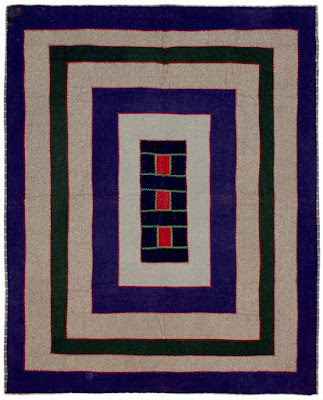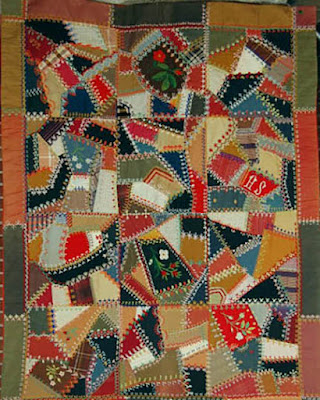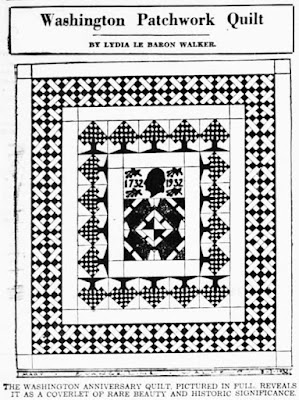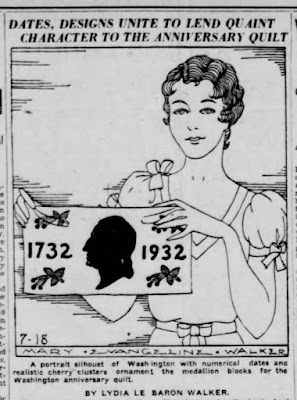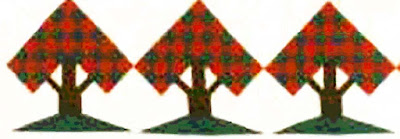It's George Washington's birthday---at least the
day Americans celebrated it for years.
February 22, 1932 was the 200th anniversary of
his birth.
It's always good to celebrate a President
who "cannot tell a lie."
To celebrate the bicentennial birthday Lydia LeBaron Walker who did a syndicated needlework column for the Bell Syndicate offered a series of patterns for a medallion quilt called The Washington Patchwork Quilt or Washington Anniversary Quilt.
Every few weeks the column pictured a part of the pattern, which had to be ordered from the newspaper's address.
Relatively few newspapers seem to have carried the Walker column, written by Lydia and Mary
Evangeline Walker. Mary did the illustrations and Lydia the copy and research. Lydia may have been Mary E.'s mother Lydia LeBaron Holmes Walker but a third family member, Mary's sister, was also named Lydia LeBaron Walker. The younger Lydia's birth name was Lydia Mabel Walker (1895-1986) but she changed it, perhaps to take advantage of her mother's reputation as a writer. Lydia Jr. was a playwright and theater director. It's quite confusing.
They're buried together in Fairhaven, Bristol County, Massachusetts.
Mother: Lydia LeBaron Holmes Walker 1869-1958
Daughters: Mary Evangeline Walker Landy 1894-1957
Lydia LeBaron Walker Jr. (!) 1895-1986. She never married.
In their quilt a second center motif was to be pieced.
Hatchets?
We don't know which Walker designed the quilt--- Mary Evangeline was an accomplished professional artist.
Mary Evangeline Walker Landy (1894-1957) in 1934
But then again, just because you can paint portraits doesn't mean
you can design a quilt.
They recycled the hatchet design at least three times calling
it Tree & Truth
Negative/Positive Hatchets
And here it is in the center of a crib quilt from an online auction.
Not an improvement on the original.
Carrie Hall of Leavenworth, Kansas redrew the center
for her quilt, now in the collection of the Spencer Museum
of Art at the University of Kansas.
Hers is an improvement.
And these are the only two quilts I have seen made from the
Walker's 1932 design.
The inner border was a pieced Cherry Tree.
BlockBase+ #838
One problem with a pair of designers seems to have been
coordinating ideas. The trees above are not the same grid
as in some other pictures. Quibble, quibble, quibble.
Hall's Cherry Tree Border
She turned all the trees the same direction.
Lydia's needlework area was rugs rather than quilts.
1923 article by mother LLBW.
She published a 472-page book Homecraft Rugs in 1929,
containing everything you need to cover the floors in your Colonial Revival home.
More recycling---This might be why so few
newspapers used their columns. Same thing over and over.
But Mary Evangeline's drawings were attractive and trendy.
The outer pieced border is a traditional album block
they called Washington Pavement.
BlockBase+ 2813a, which the Ladies' Art Company
published as Washington Sidewalk.
Hall pieced it in blue and white.
I've thought about doing a version for years---minus the hatchets.
You'd need cherries
And George.
And maybe a Washington Wreath
Mary Evangeline's obituary in the
Boston Globe, 1957












